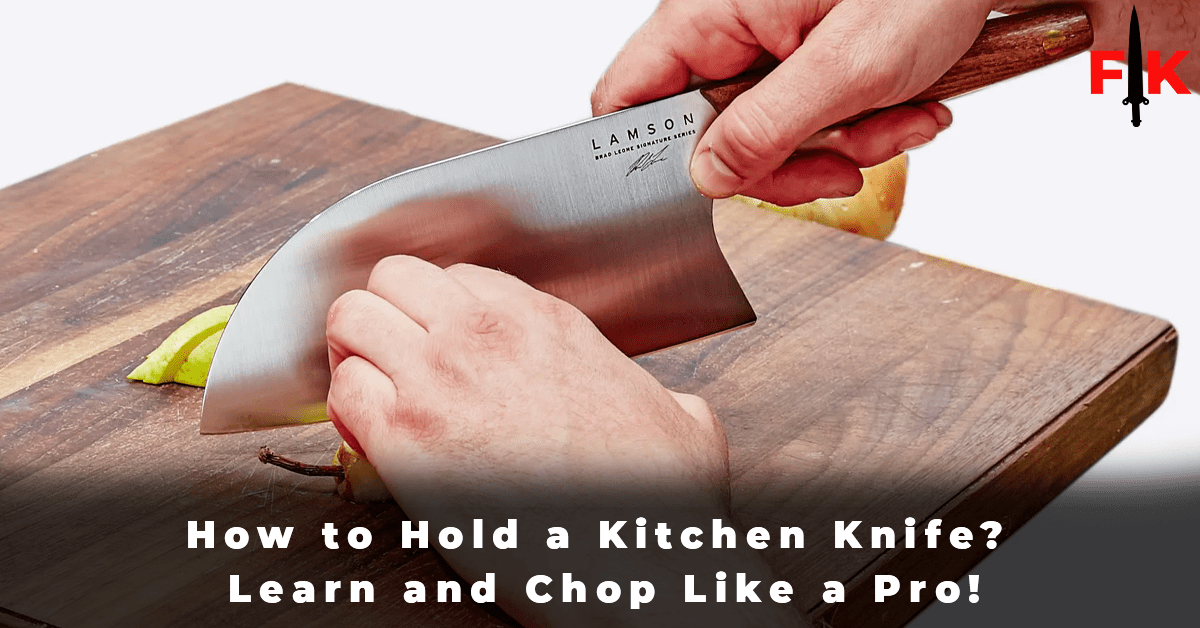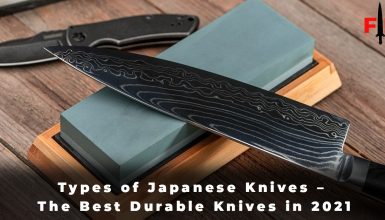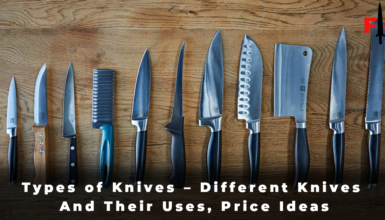The very first step to learning how to properly use a knife is to learn how to hold a knife. Regardless of the type of knife you’re using, what matters most is how you handle it while using. Proper chopping techniques could be learned when you know how to grip your knife in a way that it doesn’t slide, doesn’t move out of your hands, and doesn’t harm you either.
While holding a knife properly, what is extremely important is the correct gripping of the bolster. If you’re wondering “What is a knife bolster?” Here’s an answer. Knife bolster is basically the strengthening element for your entire knife. The bolster is basically where the blade joins the handle of the knife. So, if you know how to grip your knife at that point, you probably know how to hold a knife.
The bolster gives the perfect balance to your hand as well as the knife. By holding the knife at the bolster, you’ll have more control over the knife and how its works for you, rather than just holding it on the blade.
Further in this article, we’re going to be talking about how to hold different types of knives such as chef’s knife, paring knife.
Table of Contents
How to Properly Hold a Knife? Two Ways to Hold a Knife
As it pertains to holding a knife, there are two common techniques, each with its own benefits, but one offers a superior experience once it is mastered.
- The Handle Grip
- The Blade Grip
1. The Handle Grip
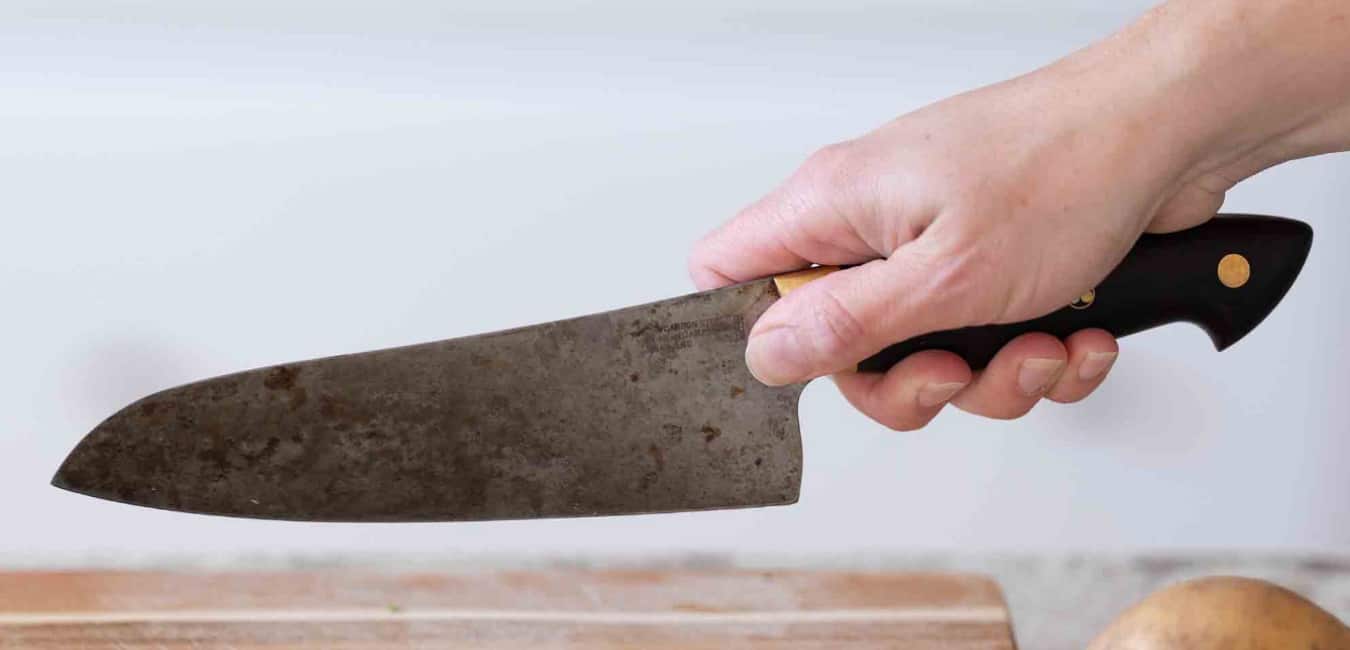
A common method used by beginners when holding a knife is the handle grip. Handling a knife in the handle grip is perhaps most natural – you wrap all five fingers around the handle so that you don’t make contact with the blade.
Beginners will find this technique comfortable as their fingers are tucked behind the blade bolster while their thumbs rest firmly on the blade. A beginner may find this grip to be comfortable and intuitive, but it does come with some drawbacks. This grip has the main disadvantage of hindering the precision of your cuts. Handle grips are rarely used by professionals because they can cause inconsistent cuts, and since the bulk of the grip is so far away from the end of the blade, delicate projects are more difficult to manage.
2. The Blade Grip
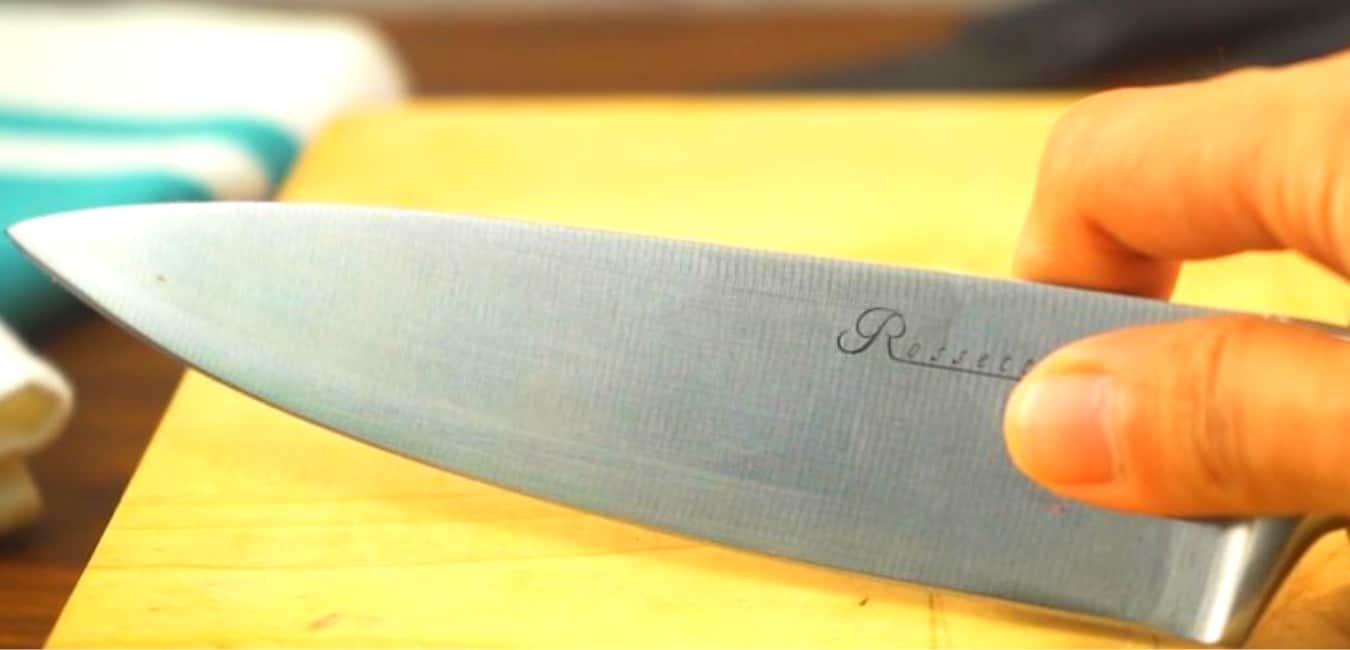
A blade grip or ‘pinch’ grip is generally considered to be the most effective way to hold a knife. With your fingers tucked under the handle, you pinch the blade between your thumb and forefinger.
In addition to giving more balanced control over the knife, the blade grip also reduces the amount of effort needed for different knife cuts, such as the “rock chop” method of cutting. In the rock method, the knife is anchored against a cutting board and rolled up and down in order to slice. You will be slicing, dicing, and mincing like a pro once you become more familiar with the blade grip and knife cuts.
How to Hold a Chef’s Knife?
For holding a chef’s knife in the most appropriate way, here’s what you need to do:
- Wrap your index finger around the blade completely. As for the three remaining fingers on the handle, they should be kind of loosely curled around the blade with the index finger and thumb on either side. Thumb and forefinger are the main fingers you should use to grip the knife.
- Having learned what to do with your knife hand, you need to ensure your other hand knows what to do as well. In the cutting board, your non-knife hand holds the food to prevent it from sliding around.
- To properly handle the food, you must keep your fingers curled inward and grip the food with your fingernails. The fingers should remain out of danger. As you guide the knife, keep the knife blade perpendicular to the cutting board by resting the blade against the first knuckle of your guiding hand.
How to Hold a Paring Knife?
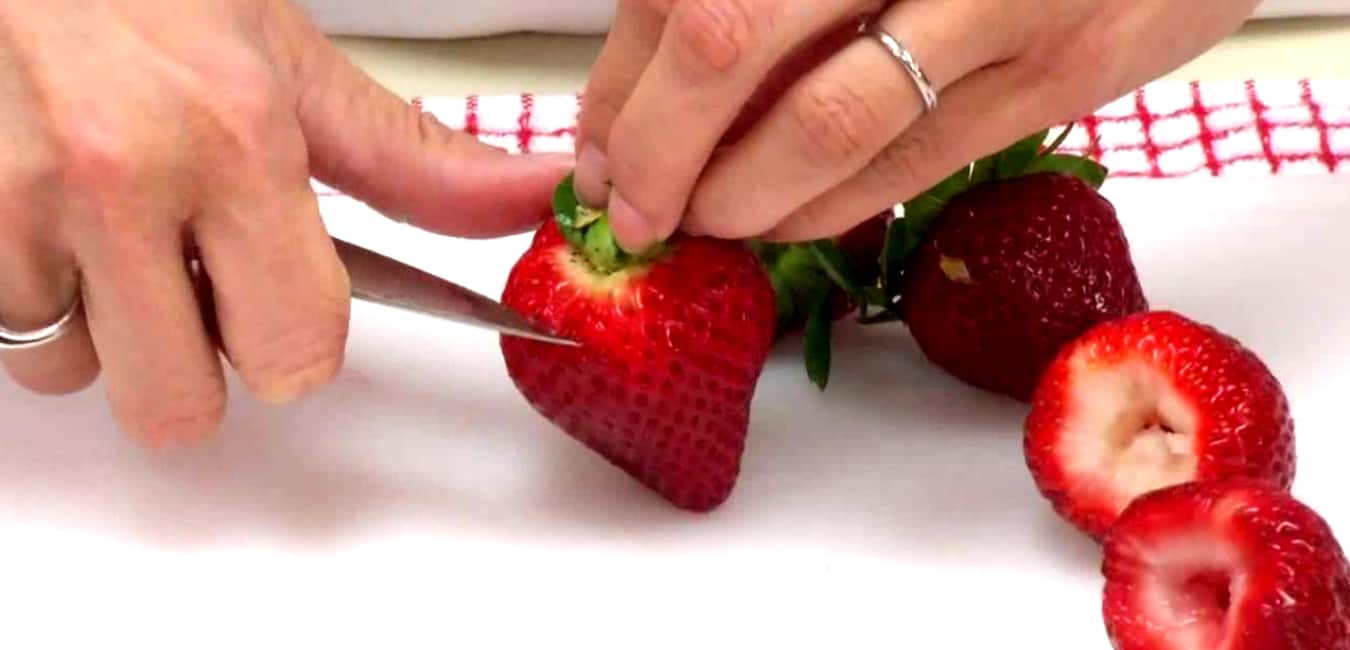
Despite having a small blade, a paring knife is not only used to mince small objects such as garlic cloves. It can be used for a variety of major tasks as well, such as trimming the vegetables on a cutting board, cutting fruits, etc.
Here’s how you grip a paring knife.
- Whether you are peeling, slicing, or trimming, you should have complete control over your blade. You should be able to hold your knife comfortably and feel secure in your hand.
- Your safety and its use depend on the way you hold the paring knife. With your dominant hand, hold the blade firmly with your fingers while still allowing some movement. Keep the blade facing towards you and keep your thumb free.
- With one hand, hold the knife between your thumb and index finger near the bolster for best control; with the other, hold the vegetable, rotating it as you go.
Does it Matter How You Hold Your Knife?
Yes. The working of your knife greatly depends on the way you hold and keep your knife balanced. A proper grip really matters! It would not only make your tasks quicker but will keep your fingers safe as well.
We recommend starting off with the right techniques only. Do not just think of getting your job done for the time being. A good start is what is going to improve your skills over time.
So, holding your knife in an appropriate way is important. We recommend using the Blade Grip or Pinch Grip for maximum comfort and safety.
Conclusion
When learning how to chop like the pros, you need to focus on more than just your knife hold – your off-hand plays a crucial role as well. Your off-hand should be in a position known as the ‘claw’ to ensure even slicing, accurate slices, and precise mince. With your fingers angled away from the blade, hold the ingredient you are cutting in place on the cutting board with the claw.
So, when learning how to properly hold a knife, it’s both hands that make a difference. Make sure you focus on positioning both of them in the most appropriate way.

